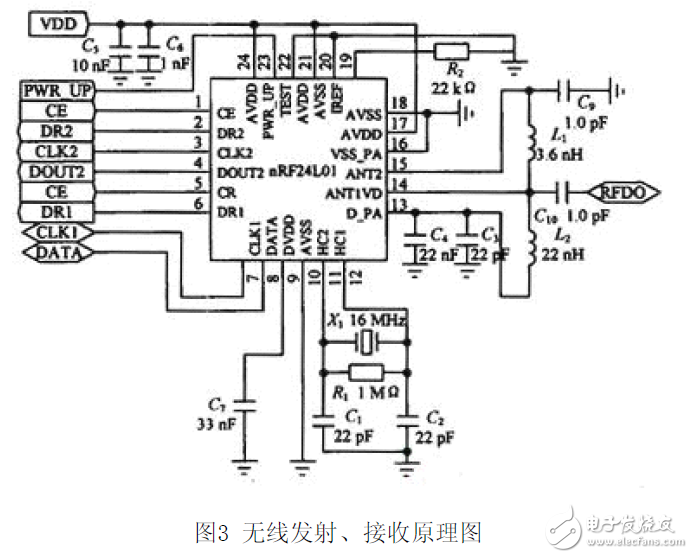TOP1 nRF24L01 wireless temperature and humidity test system circuit design
In today's industrial and agricultural production, more and more occasions require temperature and humidity collection, and accurate and convenient measurement of temperature becomes critical. The traditional wired temperature measurement method has complicated wiring, easy aging of the line, difficulty in troubleshooting the line fault, and re-wiring of the device. Especially in the case that the wired network is not smooth or the line is inconvenient due to the limitation of the on-site environmental factors, the data collection of temperature and humidity brings great trouble. In order to monitor real-time temperature and humidity data, it is necessary to collect, transmit, receive, and process wirelessly collected data through the host computer to control and monitor the operation of the device, reducing unnecessary Line equipment expenses.
Temperature and humidity acquisition circuit design
The DHT11 is a temperature and humidity composite sensor with a calibrated digital signal output. The sensor uses dedicated digital module acquisition technology and temperature and humidity sensing technology for high reliability and excellent long-term stability. Figure 2 shows its temperature acquisition circuit. The DHT11 sensor includes a resistive wet sensor and an NTC temperature sensor for connection to a high performance 8-bit microcontroller. The calibration coefficients are stored in the OTP memory as a program that can be recalled internally during the detection of the signal. The single-wire serial interface makes system integration easy and fast, and the signal transmission distance can reach more than 20m. When the length of the connecting wire is shorter than 20m, a 5kΩ pull-up resistor should be used. When it is larger than 20m, a suitable pull-up resistor should be used according to the situation.

Wireless transmitting and receiving circuit design
The nRF24L01 is a wireless communication chip produced by NORDIC. It uses FSK modulation and integrates NORDIC's own Enhanced Short Burst protocol. Point-to-point or 1-to-6 wireless communication can be achieved. The wireless communication speed can reach 2 Mb/s. The circuit schematic of the NORDIC wireless transmitting and receiving chip nRF24L01 is shown in Figure 3.

The nRF24L01 is a single-chip RF transceiver chip that operates in the 2.4-2.5 GHz ISM band. The chip has built-in frequency synthesizers, power amplifiers, crystal oscillators, and modulators. The output power and communication channels can be configured through the program. The nRF24L01 chip consumes very low power. When transmitting at -5 dBm, the operating current is only 10.5 mA. The operating current is only 18 mA when receiving. It has a variety of low-power modes of operation, energy saving and environmental protection, and is easy to design. The pin functions of the nRF24L01 wireless transceiver module are listed in Table 1. Figure 4 shows the circuit diagram when the nRF24L01 is connected to the microcontroller.

The power supply required by the wireless transmitting and receiving module is 1.9~3.6 V. In this system, the 3.3 V DC power supply is used to directly supply power to the wireless transmitting and receiving module, and the 5 V power supply passes through. The ASM1117-3.3 chip can be converted to a stable DC power supply. The power conversion circuit is shown in Figure 5.

------------------------------
Machine vision technology data collection -
20 Amp Solar Charge Controller
GuangZhou HanFong New Energy Technology Co. , Ltd. , https://www.hfsolarenergy.com